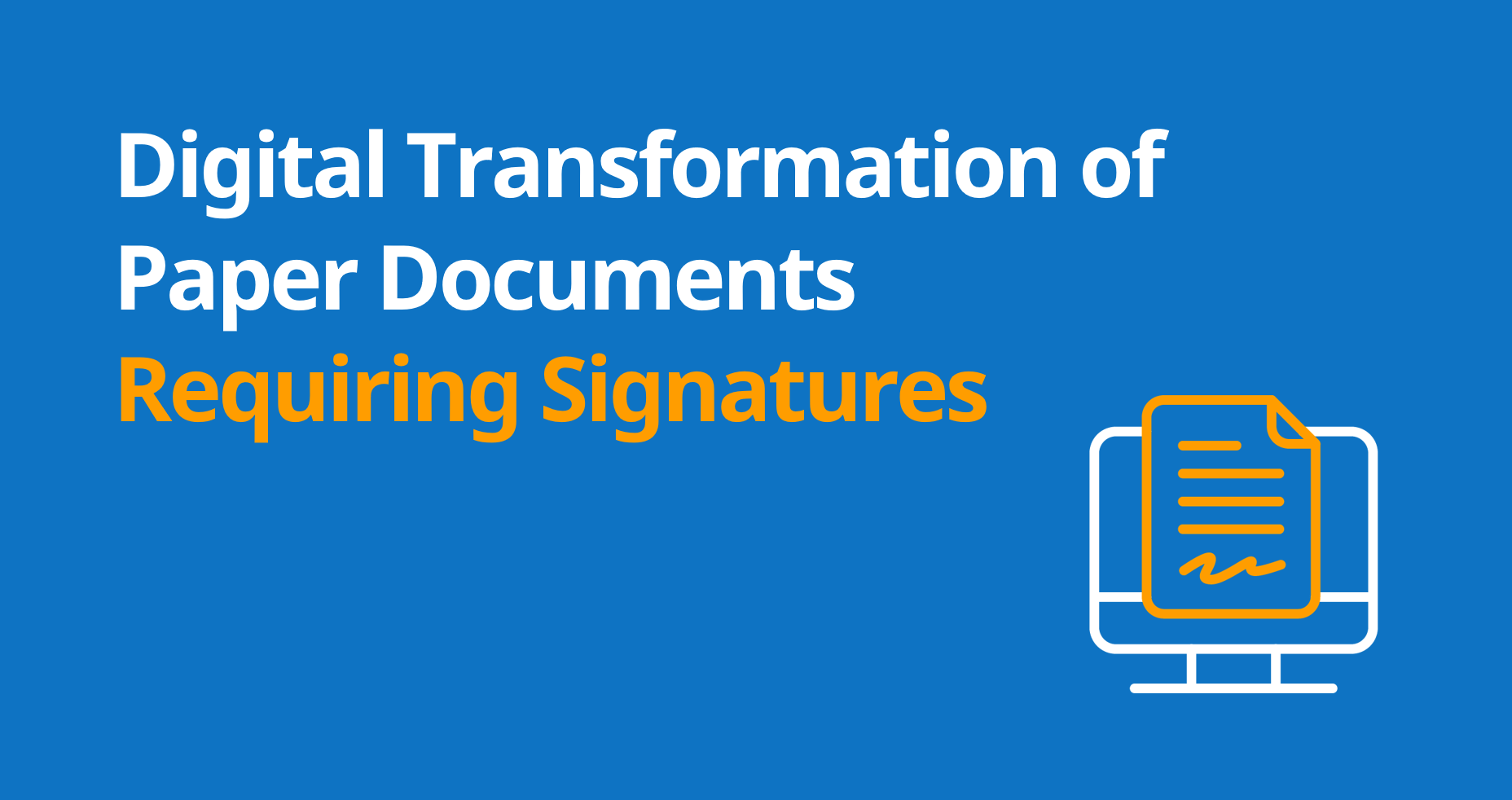
Digital transformation often feels vague and distant, even though it is a familiar concept. In this post, we will explore why digital transformation is essential, the easiest ways to approach it, and share various examples of how it can be applied to paper documents requiring signatures.
💡 The Need for Digital Transformation
From digital government platforms to various government subsidy projects, and countless examples from large corporations to public institutions—the term “digital transformation” has become very familiar to us. But why exactly is digital transformation necessary?
Primarily, digital transformation began to gain traction as remote work accelerated due to COVID-19. Our society was already rapidly digitizing across various industries. However, as remote and home-based work became commonplace, the non-face-to-face work methods once seen only in large corporations and specific industries became widespread.
The rise of ESG (Environmental, Social, and Governance) as a management trend also highlighted the need for digital transformation. ESG is a management activity that continually enhances corporate value by considering not only economic profitability but also social responsibility and the environment for sustainable growth. Recently, ESG has become a global concern and a vital factor to consider in corporate management. Digital transformation is often cited as a representative method of implementing ESG.
While external factors like these drive digital transformation, some companies initiate it because it directly impacts “improving work efficiency.” It’s a way to reduce the time and costs associated with existing tasks and efficiently streamline cumbersome and inconvenient work processes.
💡 Fast and Effective Ways to Digitally Transform
What are the quickest and most effective methods for digital transformation? One straightforward approach is to change the paper documents used in daily operations. This is especially so since the legal effect of electronic documents has become more certain in recenet years, eliminating any issues with their use.
Additionally, the recent popularization of cloud services has enabled companies that hesitated due to system construction and high costs to embark on digital transformation more swiftly. Cloud services can be applied to practical work immediately upon service adoption without the need for expenses or experts required for construction and maintenance.
Considering paper documents that require signatures—like contracts, applications, and consent forms—used frequently across various industries and departments, it’s clear that transitioning to “electronic documents” is effective. The significant time consumed by paper-based tasks, inefficient document storage and management, and the risks of loss and damage are all fundamental issues, along with various ancillary costs and resources used in operations.
However, by digitalizing these cumbersome and inconvenient tasks, you can reduce costs, enhance work efficiency, and secure safer storage. You can handle tasks without time and space constraints and utilize data with just a few clicks and searches without the need to digitalize existing paper documents. Moreover, since you can erase concerns about security and forgery more effectively than with paper documents, insisting on paper-based operations is no longer efficient.
💡 Successful Cases of Digital Transformation
To aid understanding, we’ve prepared examples of companies that improved work processes and increased efficiency by digitally transforming paper-based tasks. The companies we’ll introduce have successfully transitioned their cumbersome and challenging paper-based operations to electronic contract services.
1) Company A: Chemical Manufacturing
Company A was contemplating various methods to transform about 50 types of internal documents. When attempting to build a system, the costs and time required for the transition were burdensome, and decision-making was continuously postponed.
However, they successfully achieved digital transformation at a reasonable monthly cost of around $100, without any construction expenses. They solved everything—from sending and managing various documents like employment contracts, drivers licenses, and on-site safety checklists to organizing and utilizing data—with a single electronic contract service.
In particular, automatic storage of completed documents minimized managers’ resources, allowing a single employee to easily manage hundreds of documents per month.
2) Company B: Electrical Construction
Company B began considering digital transformation of tasks due to the “wage statement issuance obligation” following the amendment of the Labor Standards Act. With many daily workers, the hassle of writing and managing hundreds to thousands of documents, including employment contracts and wage statements, was doubled.
From regularly written daily employment contracts to monthly wage statements that had to be issued—the person in charge needed significant resources, even contracting containers to store and manage documents.
After adopting the electronic contract service, they could comply with the Labor Standards Act by automatically issuing massive amounts of employment contracts and wage statements via KakaoTalk or text messages. They securely stored documents on a cloud server without the need for physical space.
Especially when needing to find specific documents, both workers and managers could utilize them with a single search, making digital transformation satisfactory for everyone involved.
3) Company C: Manufacturing
Company C, a manufacturing company with factories nationwide, faced the hassle of HR personnel visiting factories every time to write employment contracts in person. Not only was there excessive paper consumption, but the time and costs of visiting sites were substantial. The workload was so intense that overtime during the employment contract season was considered standard.
Now, they request signatures on contracts remotely via KakaoTalk and text messages while sitting in the office. They can monitor the progress of a large number of employment contracts in real-time and safely store completed contracts, allowing the person in charge to focus on other tasks after sending out the contracts.
💡 eformsign: Electronic Contracts for Efficient Professionals
eformsign enables quick and effective digital transformation. It’s an “electronic contract service” that anyone can easily use anytime, anywhere, with a “reasonable pricing plan” and no separate setup required. We recommend it to those contemplating the start of digital transformation since it allows you to write, sign, send, and securely store numerous documents with legal effect—such as contracts, applications, and consent forms—via email or KakaoTalk.
Ready to transform your contract process? Contact us Start your journey towards efficient digital transformation with eformsign today!

